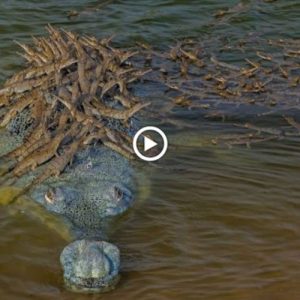In a heartwarming and rare spectacle, a family of white lions, nearly extinct in the wild, has been revealed at the Magdeburg Zoo in Germany. These magnificent big cats, born with a recessive gene causing their light coloration, are a true symbol of hope for their species. In this article, we’ll take a closer look at this remarkable family of white lions, their unique genealogy, and their importance in the conservation of these majestic creatures.
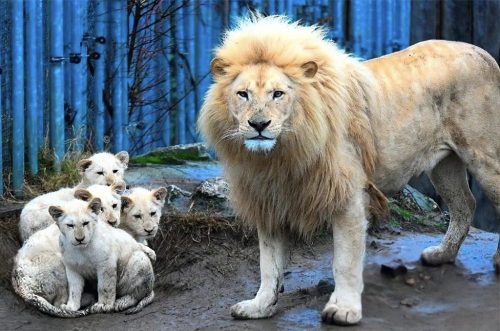
A Precious Family of White Lions
The photographs captured at Magdeburg Zoo showcase the beauty of a family of white lions, including eight-week-old cubs that are nothing short of enchanting. These cubs, three males and one female, were born on Christmas Day within the confines of their enclosure. Now, they weigh between eight and 11 kilograms each, reflecting their healthy development under the watchful eyes of their parents.
The Rare Recessive Gene
These white lions owe their stunning light coloration to a recessive gene, a genetic anomaly that sets them apart from their tawny counterparts. Born with a distinctive appearance, these lions are found in only one place on Earth—the Greater Timbavati region in South Africa. Sadly, their population is perilously low due to the threat of poaching.
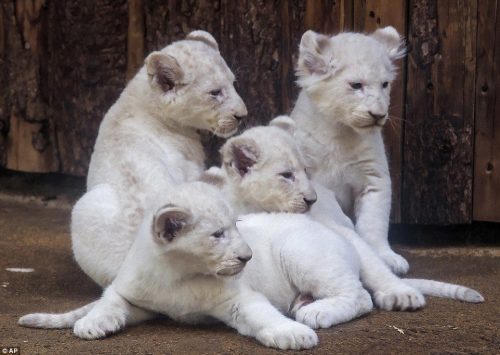
Kiara and Madiba: Dedicated Parents
Kiara and Madiba, the lioness and lion at Magdeburg Zoo, have proven to be dedicated and loving parents. The remarkable bond they share with their cubs is evident in the way they interact with them. From playtime to cuddles, the cubs are nurtured and cared for by their attentive mother and father.
A Symbol of Hope
The birth of these white lion cubs is a symbol of hope for their species. With the threat of extinction looming over them, every new generation brings renewed optimism for the survival of these magnificent creatures. The white lions’ unique genealogy and the dedication of zoos like Magdeburg in their conservation efforts play a crucial role in preserving these animals for future generations.
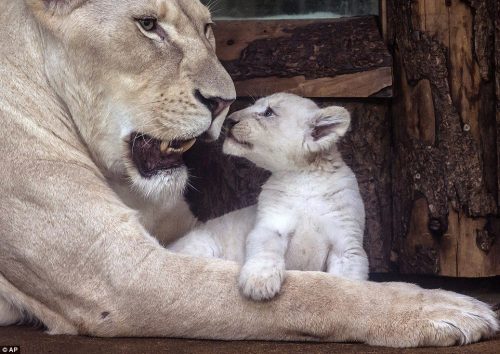
Leucism Pigment Gene
One of the defining characteristics of these white lions is the leucism pigment gene, which grants them striking blue or green-grey eyes instead of the typical brown. Furthermore, their white pelts remain throughout their lives, setting them apart as truly unique and enchanting creatures.
Conclusion
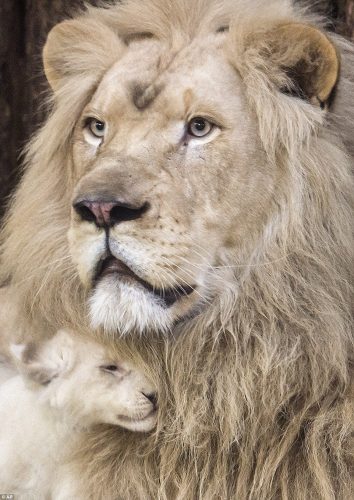
The family of white lions at Magdeburg Zoo is not just a captivating sight; it is a reminder of the importance of conservation efforts to protect endangered species like these magnificent big cats.
As their population dwindles in the wild due to poaching, these white lions offer hope and serve as ambassadors for their kind. Their unique genetic heritage and the love and care they receive from Kiara and Madiba are a testament to the beauty and fragility of wildlife on our planet.





